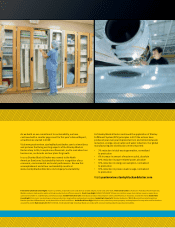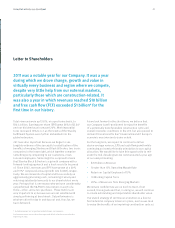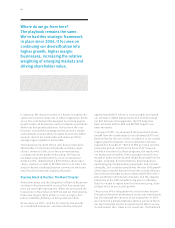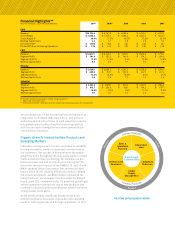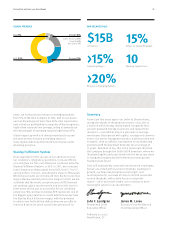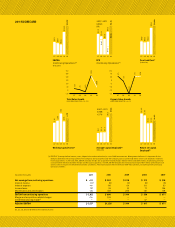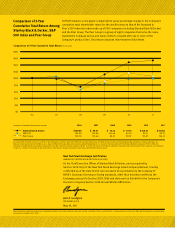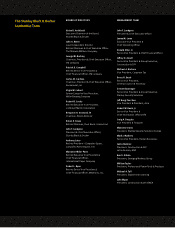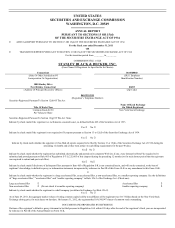Black & Decker 2011 Annual Report Download - page 4
Download and view the complete annual report
Please find page 4 of the 2011 Black & Decker annual report below. You can navigate through the pages in the report by either clicking on the pages listed below, or by using the keyword search tool below to find specific information within the annual report.
it ramps up. We remain focused on a balanced capital allo-
cation plan over the long term, in which roughly two-thirds
of our free cash flow will be deployed to promote organic
growth across all businesses and to complete acquisitions
within our four growth platforms. As has been the case
for years, our portfolio strategy centers around a steady
and methodical reallocation of capital to activities where
superior returns are sustainable and above-portfolio-
average organic growth is achievable.
The remaining one-third of free cash flow is returned to
shareholders in the form of dividends and share repur-
chases. Inherent in this is our focus on maintaining
a strong investment grade credit rating. was an
exemplary year to illustrate this, as we increased our
dividend %, implemented a $ million share repur-
chase, lowered our debt to EBITDA ratio to .x from .x,
and purchased a leading European commercial electronic
security and monitoring company, Niscayah.
Stanley Black & Decker: The Next Chapter
Almost two years into the integration of Black & Decker we
continue to be pleased with success that has surpassed
even our own high expectations. When we announced the
transaction in November of we laid out the following
three-year targets: $ million in cost synergies, $.
billion in EBITDA, $ billion in FCF and $. in EPS.
As we close out — and the first twenty-two months
as a combined enterprise — we have already achieved
approximately $ million in cost synergies and raised
our estimate to $ million by the end of . During
our first full year of management, the FCF target has
been achieved and the EPS and EBITDA targets have
been exceeded.
In January of , we announced the expected revenue
benefit from the combination to total between $ and
$ million by the end of , in addition to our normal
organic growth initiatives. This incremental revenue is
expected to drive $. $. of EPS accretion over the
same time period, and while the focus of was on
the initial investment in these programs, the results met
our expectations handily. These synergies result from a
myriad of opportunities around the globe arising from the
merger, including, but not limited to, brand expansion
and leveraging complementary geographic and channel
strengths. One notable example was the over % growth
of the legacy Stanley hand tool business in Latin America
due to the post-merger access to legacy Black & Decker’s
well-established distribution channels, and the ongoing
expansion of the BDK manufacturing plant in Uberaba,
Brazil to enable in-region hand tool manufacturing, a key
cultural factor to successful growth.
The success of the integration has not just been evident
through our financial performance versus our stated goals,
but also through the opinions of our employees. In ,
we conducted a global employee opinion survey in which
our approximately , associates were able to anony-
mously submit their views on questions. The feedback
Where do we go from here?
The playbook remains the same.
We've had this strategic framework
in place since 2004. It focuses on
continuing our diversification into
higher growth, higher margin
businesses, increasing the relative
weighting of emerging markets and
driving shareholder value.
02


